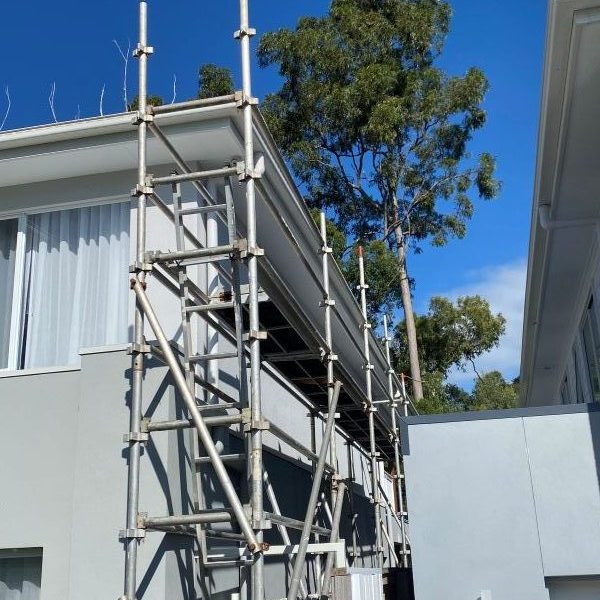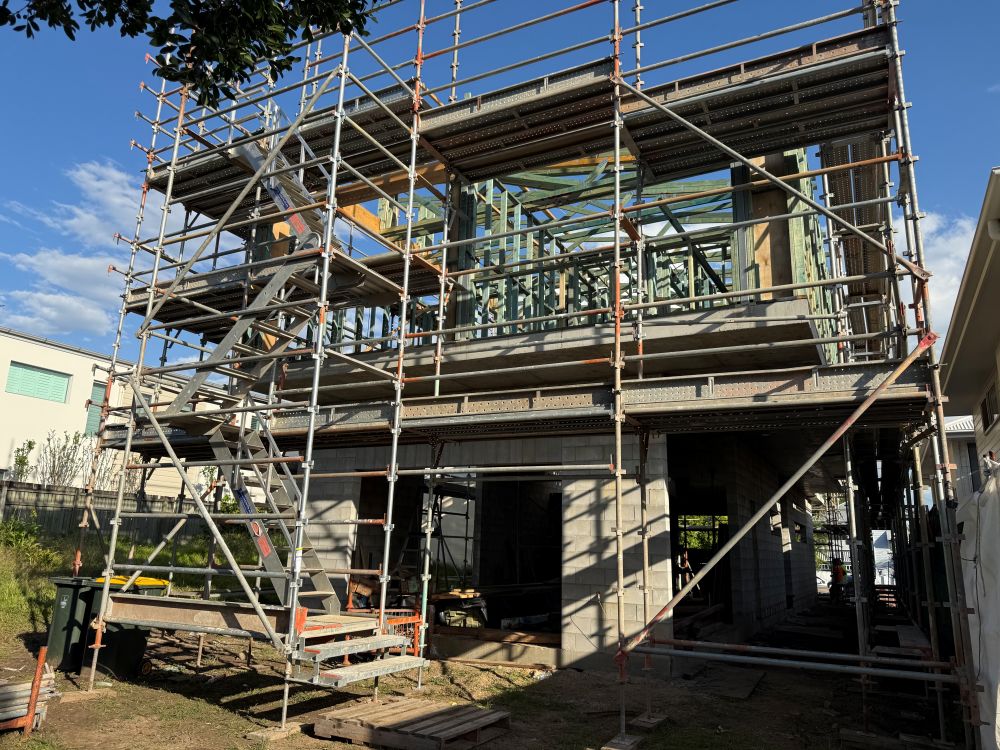Enhancing Scaffold Load Capacity: Essential Insights for Ensuring Safety and Compliance in the Construction Industry
Scaffold load capacity is a critical aspect that determines the utmost weight a scaffold can safely bear during various construction activities. This vital parameter encompasses three primary categories of loads that must be meticulously evaluated:
- The weight of the scaffold itself, often termed the dead load, which includes all structural components
- The weight of workers along with their tools and materials that will be positioned on the scaffold (known as the live load)
- External forces such as wind, rain, and vibrations that can impact the scaffold (classified as environmental load)
Grasping these load categories is essential, as they directly affect the total stress exerted on a scaffold during its operational use. Adhering to these calculations is not merely recommended; it is mandated under Australian law to safeguard the wellbeing of all personnel engaged in construction projects.

Comprehensive Step-by-Step Instructions for Effectively Using Our Scaffold Load and Height Calculator
While it is important to note that a universal formula cannot cater to every scaffold configuration, our scaffold calculator offers a straightforward method to derive precise estimates by streamlining essential variables. This tool is specifically designed for residential builders, homeowners, and scaffold hire professionals who operate in accordance with the standards outlined by Australian OHS regulations.
Step 1: Select the Type of Work
Determine the nature of the work to be performed, which may encompass tasks such as roof restoration, exterior painting, solar panel installation, cladding, or rendering.
Step 2: Input the Number of Workers
For instance, you may specify that two workers will be operating concurrently on the scaffold platform.
Step 3: Gauge the Weight of Materials
This step might include an estimation of around 120 kg of rendering materials or tools that will be utilised throughout the project.
Step 4: Provide the Height of the Platform
As an example, the height could be established at 4.5 metres above ground level.
Upon entering this information, the calculator will yield a recommended scaffold configuration that incorporates:
- The appropriate duty class (e.g., Light, Medium, or Heavy)
- An estimation of the Safe Working Load (SWL) per bay
- The suggested scaffold type (e.g., aluminium tower or steel frame)
- Essential safety features required (including guardrails, soleplates, and stabilisers)
- Any compliance triggers related to height (e.g., tie-offs mandated above 4 metres)
Understanding the Absence of a Universal Load Formula for Scaffolding Applications
Though the scaffold calculator is a practical instrument for generating estimates, scaffolders and engineers do not depend solely on a singular formula. This reliance is influenced by several important factors:
- Scaffold systems can differ significantly based on materials and designs (such as aluminium, steel, modular, and tube-and-coupler)
- The intended use profoundly impacts the load capacity (for example, painting versus masonry)
- Various manufacturers provide differing platform strength and component ratings, leading to inconsistencies
Standard Industry Method for Estimating Safe Working Load (SWL)
Professionals frequently refer to the following formula as a foundational guideline for estimation:
Safe Working Load (SWL) per bay = (Platform Load Rating × Safety Factor) – Scaffold Component Weight
Illustrative Example:
- A platform rated for a maximum load of 600 kg
- Applying a 4:1 safety margin: utilising only 25% of the rating yields 150 kg
- Subtracting the weight of the scaffold structure, which is 100 kg
- The resultant usable working load is 50 kg (this is a conservative figure and typically does not reflect actual planning)
Given the complexities of real-world scenarios, professional scaffolders generally adhere to manufacturer guidelines, engineering tables, and local codes instead of relying solely on this simplified formula.

Best Practices Adopted by Professionals for Scaffold Evaluations
Professional scaffold evaluations typically encompass several crucial components to ensure safety and compliance:
- Reviewing manufacturer load data and verified span ratings for accuracy and reliability
- Calculating total live, dead, and environmental loads to guarantee a secure setup
- Ensuring adherence to AS/NZS duty class specifications to meet industry standards
- Obtaining engineering sign-off for any bespoke or elevated scaffold configurations
- Conducting comprehensive visual and structural inspections prior to scaffold deployment to detect any potential safety hazards
Customising Scaffold Practices to Suit Environmental Conditions and Site-Specific Factors
Mitigating Wind Exposure in Coastal Queensland
In areas categorised under wind zones N3 and N4, the lateral forces impacting scaffolds are significantly amplified. Consequently, scaffolds must be anchored at shorter intervals, and additional bracing or shade cloth may be essential, particularly during high-wind seasons, to maintain stability and safety.
Considerations for Soil and Ground Types
When contending with unstable or sloped soil conditions, it becomes crucial to utilise soleplates and adjustable base jacks to enhance the stability of the scaffold. Furthermore, sites with varying elevations may necessitate the implementation of levelled bay systems to ensure a safe working environment for all personnel.
Regulatory Requirements for Work Above Four Metres
In Queensland, any platform that exceeds four metres in height is subject to rigorous inspection and certification. A scaffold handover certificate is mandated under the Work Health and Safety Regulation 2011, ensuring compliance with established safety standards.
Vital Safety Regulations to Follow in Scaffold Operations
- Work Health and Safety Regulation 2011 (QLD)
- Managing the Risk of Falls at Workplaces (Code of Practice, 2021)
- AS/NZS 1576 and AS/NZS 4576 Standards pertaining to scaffold safety
- High Risk Work Licence (HRWL) is mandatory for any scaffold setup above four metres
Site supervisors bear the responsibility for conducting routine inspections, particularly after adverse weather events or when there are significant alterations to scaffold height or load, thereby ensuring ongoing adherence to safety regulations.
Real-World Case Study: Scaffold Utilisation in Robina
In a recent project on the Gold Coast, a homeowner in Robina required scaffolding for the purpose of repainting and rendering a two-storey exterior wall. The operational height for this task was established at five metres, with two tradespeople utilising approximately 200 kg of rendering materials and tools throughout the duration of the project.
By utilising our scaffold calculator, the recommended configuration was established as follows:
- Scaffold class: Medium Duty, appropriate for the task at hand
- System type: Steel frame with timber planks for enhanced durability
- Additional safety measures: Comprehensive edge protection, soleplates for soft earth conditions, and wind mesh to mitigate exposure to wind
The scaffold successfully passed all necessary inspections and complied with Queensland’s OHS regulations, resulting in no downtime throughout the project’s execution.
Key Considerations Regarding Scaffold Height and Load Capacity Calculations
Determining scaffold height and load capacity must never be regarded as a mere guess. In residential projects, this meticulous procedure is crucial for ensuring safety, managing costs effectively, and achieving compliance with relevant local regulations.
Considering the specific requirements applicable to Australian conditions, particularly in southeast Queensland, we strongly recommend obtaining an accurate scaffolding quote and ensuring that all installations are executed by qualified professionals.
Reach Out to CanDo Scaffolding Hire for Expert Advice and Services
For more information regarding our comprehensive services, please don’t hesitate to contact us at 1300 226 336 or send an email to [email protected] at any time.
We provide a complete range of scaffolding solutions, including void protection platforms and roof edge protection, tailored to meet the diverse needs of any residential or light commercial construction project.
Understanding Scaffold Load Capacity for Residential Projects
The Article: Scaffold Load Capacity Insights for Residential Projects first appeared on https://writebuff.com
The Article Scaffold Load Capacity for Residential Construction Projects Was Found On https://limitsofstrategy.com
References:
Scaffold Load Capacity for Residential Construction Projects



